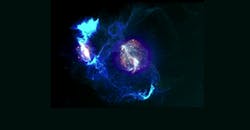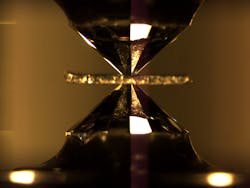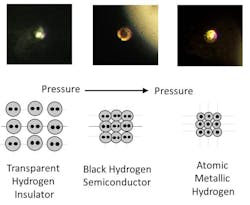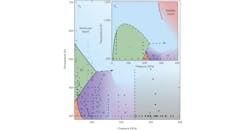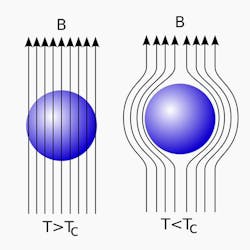Harvard Makes the Latest Claim for Creating Metallic Hydrogen
Harvard scientists claim to have synthesized metallic hydrogen in the lab for the first time. In a study submitted to the journal Science last October, the scientists described how they used a cell-diamond anvil to pressurize a small sample of hydrogen between the tips of two diamonds.
Upon reaching 495 gigapascals—nearly 5 million atmospheres—they report that the hydrogen transitioned to a solid metallic phase, which has eluded scientists since it was hypothesized 80 years ago. They used a special coating to protect the diamonds from breaking under such high pressures and to secure the sample.
For now, the sample remains stored between the diamond tips until the team removes it in a controlled environment. Solid metallic hydrogen is theorized to be superconductive at room temperature, expelling magnetic fields and conducting electricity with little to no resistance or heat dissipation. Some theorists think it could remain in its metallic state when the high pressure is released—a phenomenon called metastability.
The image below shows the hydrogen's phase transitions at different pressures.
If the metallic hydrogen is indeed a metastable superconductor, it will be useful for a range of applications. It could be used as a high-energy rocket propellant or as a room-temperature superconductor for MRI machines and magnetic transport rails. It could also be used in low-energy electronics that dissipate less heat through conductive wires.
But knowing the pressure required to drive the phase transition is just the first step in that direction. More research would be needed to make the metallic hydrogen in larger quantities. Furthermore, other scientists are questioning the validity of Harvard's findings; they demand more proof that it has been created at all.
Last January, Edinburgh scientists published in Nature that they had converted hydrogen gas—an insulator—into a precursor of metallic hydrogen (phase V) using a cell-diamond anvil at room temperature and 384 GPa.
One of the authors of the paper, Eugene Gregoryanz has been quoted in various news outlets saying that if the Harvard team was successful, it should be able to reproduce its results and use less ambiguous imaging techniques to prove that there were phase changes. For example, the Edinburgh team used Raman spectroscopy to identify phase changes in the sample as it converted from a gas to a crystal.
Dr. Isaac F. Silvera, a professor of physics at Harvard and one of the leading authors of the paper, says that his team plans to reproduce its results and use Raman spectroscopy to identify modes of vibrations that characterize each phase in future experiments. The team has also been prompted to provide more proof that the phase change is occurring in the hydrogen sample, not in the aluminum-oxide coating that was used on the diamonds to ensure that they don't break.
Metastable metallic hydrogen could be used as a high-energy rocket fuel under high heat as it would release a lot of energy as it reverts back to an insulative gas. Because it is a superconductor at room temperature, it could be used in electromagnets for MRI machines and particle accelerators without the need for expensive coolants like liquid helium or liquid nitrogen. Superconductors today require either very high or cryogenic temperatures (-70 to -273°F) to conduct electricity with little to no resistance.
Watch the video below from Sydney Boys High School to see how superconductors expel magnetic fields when cooled to cryogenic temperatures.
Harvard Makes the Latest Claim for Creating Metallic Hydrogen was originally published on MachineDesign, an Endeavor Business Media partner brand.
